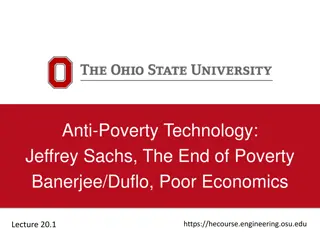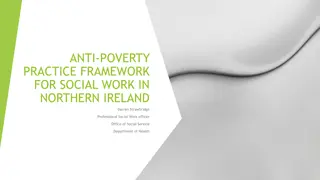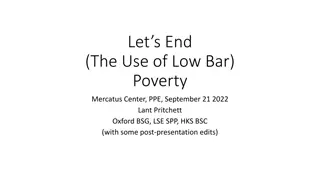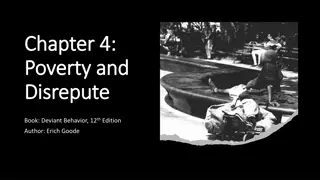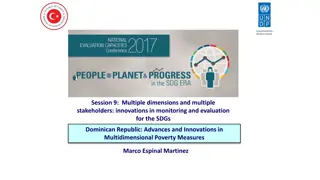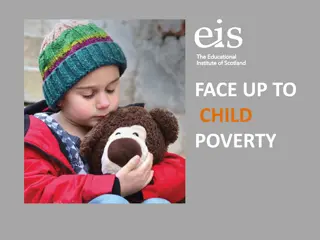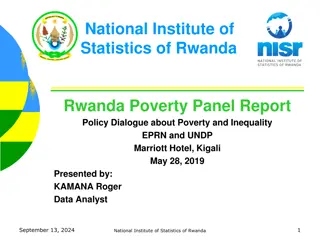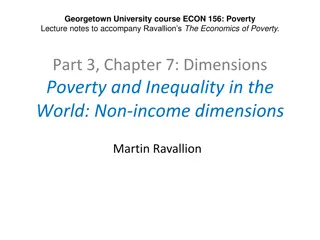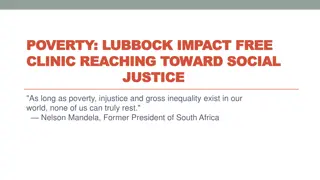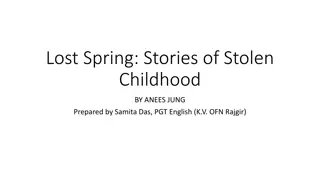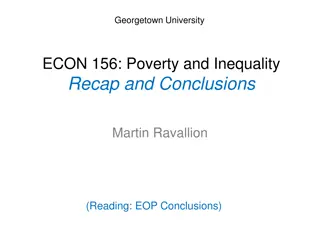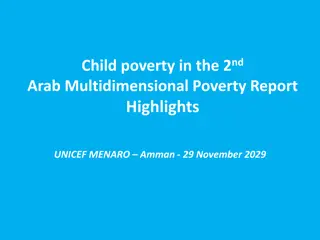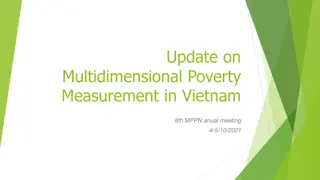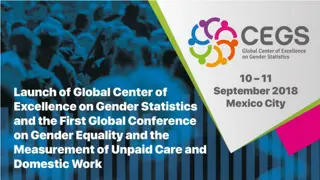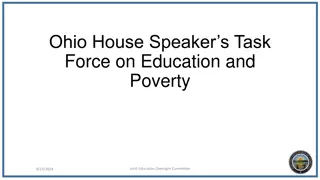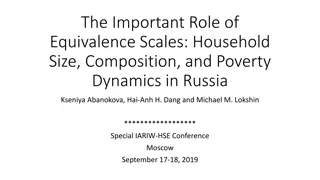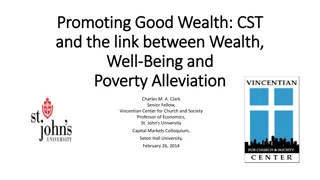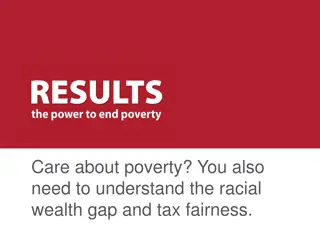Exploring Poverty and Lost Childhood in 'Lost Spring'
The story in "Lost Spring" by Anees Jung delves into the harsh reality of poverty through the lives of characters like Saheb and Mukesh. In Part-I, Saheb, a ragpicker, symbolizes the resilient spirit amidst destitution, while Part-II portrays the longing of children like Mukesh for a better life. Through encounters with these characters, the author highlights the impact of poverty and age-old traditions on the dreams and innocence of the young.
Download Presentation

Please find below an Image/Link to download the presentation.
The content on the website is provided AS IS for your information and personal use only. It may not be sold, licensed, or shared on other websites without obtaining consent from the author. Download presentation by click this link. If you encounter any issues during the download, it is possible that the publisher has removed the file from their server.
E N D
Presentation Transcript
English Core. Book: Flamingo Lesson: Lost Spring. By Anees Jung (She) Theme:Two Parts: Part-I. Sometimes I Find a Rupee in the Garbage. Characters: Author and Saheb. Part-II. I Want to Drive a Car. Characters: Author and Mukesh. Theme: Poverty and age old traditions make the children lose the spring time of their life.
New Words Meanings: Pg No: 13 and 14 encounter: (v) come across scrounging: (v) searching for something glibly: (adv) without caring abound: in plenty perpetual: never ending Pg No: 15 and 16 desolation: in waste periphery: outskirts squatters: those who settle illegally transit: temporary intently: (adv) with interest
New Words Meanings: Pg No: 17, 18 and 19 dingy: dark and dirty hovels: small dirty houses primeval: ancient mounds: heaps unkempt: untidy/ messy tongs: movable parts shanty: poor sanctity: sacredness apathy: indifferent stigma: mark of disgrace vicious: wicked
Point Wise Summary: Part-I. Sometimes I Find a Rupee in the Garbage. The author meets Saheb every morning. Saheb is a ragpicker who lives in Seemapuri. He is from Dhaka, Bangladesh. The author asks if he goes to school. She promises to open a school but fails to keep it. Saheb-e-Alam is the full name of Saheb but he does not know the meaning of his name. The author asks the ragpickers why they are not wearing chappals.
They offer different explanations of their not wearing chappals. But the author wonders if they are the excuses to explain away a perpetual state of poverty. The author recalls the story of a priest s son praying for a pair of shoes and the situation has changed now. Ten thousand ragpickers Seemapuri on the outskirts of Delhi. They are from Bangladesh. live in
Food is more important for them than their identity. Garbage has two meanings: A means of wonder for the children. A means of survival for the elders. For Saheb, wearing a pair of discarded shoes is a dream come true. Now Saheb works in a tea stall for Rupees 800 a month and all the meals but not happy for, he is no more his own master.
Part- II. I Want to Drive a Car Mukesh, son of a bangle-maker from Firozabad wants to be a motor mechanic. Firozabad is famous for its bangles. Twenty thousand children work in glass-bangle factories in Firozabad. They do not pay attention to the hazards: high temperature, dingy cells, effects on their eyes and health. They live in hovels with crumbling walls.
People work in bangle factories; they know nothing except making and selling bangles. The author visits Mukesh s house and interacts with his grandmother who says no one can break what has been given by God. The author notices Savita, a young girl working mechanically. The author wonders if Savita is aware of the sanctity of the bangles that she is making. The author asks a group of young men why they do not organize themselves into a cooperative.
They reply if they organize, they will be beaten by the police, and at the same time they do not have a leader to lead them. The author notices two distinct worlds in Firozabad: 1. the working class and 2. the vicious circle of the rich, the politicians and the police. These two circles never let anyone think differently. The author is happy to notice that Mukesh thinks differently and wants to be a motor mechanic. ***********
Extracts 1. Read the following extract and answer the questions that follow. Set amidst the green fields of Dhaka, his home is not even a distant memory. There were many storms that swept away their fields and homes, his mother tells him. That s why they left, looking for gold in the big city where he now lives. I. Who is his here? Ans: Saheb s. II. What does his mother tell him? Ans:That there were many storms that swept away their fields and homes. III. Where did he live? Ans: In the green fields of Dhaka. IV. What is gold referred to here? Ans: rags .
Extracts 2. Read the following extract and answer the questions that follow. When you can find a silver coin in a heap of garbage, you don t stop scrounging, for there is hope of finding more. It seems that for children, garbage has a meaning different from what it means to their parents. I. Who are the children referred in the extract? Ans: the ragpickers. II. Why doesn t a ragpicker stop scrounging even after getting a silver coin? Ans: hope to get more. III. What does the garbage mean to the children? Ans: Means of wonder. IV. What does the garbage mean to the elders? Ans: Means of survival.
Extracts 3. Read the following extract and answer the questions that follow. I will learn to drive cars, he answers, looking straight into my eyes. His dream looms like a mirage amidst the dust of streets that fill his town Firozabad, famous for its bangles. Every other family in Firozabad is engaged in making bangles. I. Who is I here? Ans: Mukesh. II. What is the literary device used in the second sentence? Ans: Simile. III. What is Firozabad famous for? Ans: Bangles. IV. What is the main profession of the people of Firozabad? Ans: Making bangles.
In Text Questions and Answers: 1. What is Saheb looking for in the garbage dumps? Where is he and where has he come from? Ans: - for gold. Seemapuri and from Dhaka, Bangladesh. 2. What explanations does the author offer for the children not wearing footwear? Ans: - Ragpickers have different explanations like: mother not bringing them down the shelf, a tradition to remain barefoot etc.- the author concludes that it is simply an excuse to hide their perpetual state of poverty.
In Text Questions and Answers: 3. Is Saheb happy working in the tea-stall? Explain. Ans: - No, because he has lost his freedom though he gets Rupees 800 a month and all the meals- no longer his own master. 4. What makes the city of Firozabad famous? Ans: - producing and selling all kinds of bangles centre of India s glass-blowing industry. 5. Mention the hazards of working in the glass bangles industry. Ans: - high temperature, dingy cell, dim light leading to loss of eyesight and health disorder. 6. How is Mukesh s attitude to his situation different from that of his family? Ans: - thinks differently and wants to break the tradition- wants to be a motor mechanic. ********
Understanding the Text: 1. What could be some of the reasons for the migration of people from villages to cities? Ans: Introduction- Reasons: 1. Search for better livelihood, 2. Better education and health facilities, 3. No promotion of village products, 4. Job prospects- Conclusion. 2. Would you agree that promises made to poor children are rarely kept? Why do you think this happens in the incidents narrated in the text? Ans:- Introduction - Yes, promises are made but not kept Anees Jung fails to keep her promise in opening a school - child labour still goes on even after 73 years of independence -10000 children in Seemapuri and 20000 children in Firozabad for law is not enforced in true spirit conclusion.
3. What forces conspire to keep the workers in the bangle industry of Firozabad in poverty? Ans: - Introduction -two forces: 1. Poor people bound by tradition 2. The vicious circle of the sahukars, the policemen and the politicians leading to 20000 children work in glass- blowing industry -cannot organize themselves into cooperative -cannot take initiatives -conclusion. Talking about the Text 1. How, in your opinion, can Mukesh realise his dream? Ans: - Introduction -it is said that luck favours the brave and Mukesh is brave enough to materialize his dream -wants to become a motor mechanic -should get education which is basic for anything to do -has to go to a garage where he can learn -hard work, perseverance and proper guidance will help -conclusion.
2. Mention the hazards of working in the glass bangles industry. (Already discussed) 3. Why should child labour be eliminated and how? Ans: - Introduction -they are the future maker of the nation so their spring time should not be wasted - 10000 children of Seemapuri and 20000 children of Firozabad can be saved by: -providing them education -say no child labour -strict laws to be enforced - awareness to be created in the society - conclusion. *********
Extra Short Answer Type Questions to be answered in 30 to 40 words each. 1. Why did the narrator feel embarrassed at having made apromise ? Ans: - Because she failed to keep the promise of starting a school. 2. Why does the author say, Mukesh s dream of being a motor mechanic looms like a mirage amidst the dust of streets that fill his town Firozabad ? Ans: - Because people of Firozabad are poverty- stricken they never think differently. 3. How has Mukesh s father sustained his life all through?
Ans: - First as a tailor, then as a bangle maker failed to renovate his house and send his two sons to school only taught them bangle-making. 4. Why does the hole in the shoe not bother Saheb? Ans: - Because to have a pair of shoes is a dream comes true for Saheb. 5. Why can t the bangle makers organize themselves into a cooperative? Ans: - fear of police no leader to see things differently and lead them . ********
HAPPY LEARNING Dr. Rutuparna Sahu PGT (English)



